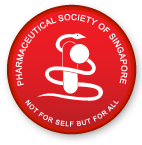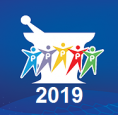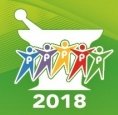For a very long time now, pharmacists in Singapore have been requesting for mandatory separation of dispensing from prescribing by the physicians.
One of the most compelling justifications to push for the clear demarcation of dispensing/prescribing functions, from professional view point, is the needs to ensure neutrality and having the patients’ well-being as our top priority. In the days when practice of medicine and pharmacy were not so sophisticated, such discussion about dispensing vs. prescribing often invoked intense, sometimes emotional debates.
Decades on, healthcare services and disease trends have grown in complexity, not least the spiralling cost escalations; thereby forcing the policy makers and stakeholders alike to critically review the “business model” of healthcare system, predicting its sustainability, and make pragmatic adjustments to manage the situation.
Looking from the perspective of operations, healthcare is an extremely knowledge and capital-intensive economic cluster, but not scoring very high on the efficiency scale! In a typical tertiary care institution for instance, a patient is not looked after by one healthcare professional, but usually by a “platoon” of experts from various disciplines, often simultaneously! Needless to say, the policy makers and various healthcare stakeholders (the payors in particular) are having difficulties sleeping peacefully due to the direction this “sophistication”.
A lot of thoughts and planning have gone into improving health service efficiencies. One of the emerging trends has been “right-siting” & effective use of trained human resources. The conventional mindset that patients go to hospitals to “exclusively” see doctors only is being challenged. Yes, doctors are the principal reason why patients visit hospitals; but even in our Singapore health system nowadays, administrators are triaging the right patients to the right care. In simple terms, what customers (patients) want from their vendors (hospitals) are:
i) diagnosis,
ii) treatment/service,
iii) products/medications, &
iv) advice.
Fundamentally, patients still see doctors, but many can be triaged to the pharmacists, nurses, therapists etc on subsequent visits, thereby maximizing the latter's core competencies and improve service efficiency, improving the turnover of staff and not to mention the institutions’ bottom-line; at the same time freeing up the doctors’ time for more complex cases, reducing patients’ time-to-appointment & deterioration of disease state. It’s a win-win-win for all parties concerned.
{mosimage}
Some of our colleagues, and certainly many non-pharmacists, may not be aware that a number of our pharmacists working in public hospitals have already been running outpatient anticoagulation clinic, lipid clinic, smoking cessation clinic etc., and seeing patients independently; but in collaboration with haematologists, cardiologists etc. They interpret lab results, take medication history, dispense advice and adjust dosages of their medications; in other words, converging our roles to what a physician would do.
{mosimage}
When I was attending the Asia Pacific Symposium of Pain Control in KL recently, I was having dinner and talking to a young doctor from KL General Hospital. I shared with him the changes to the healthcare system in Singapore hospitals, including the above clinics run by pharmacists. For a moment, the young nephrologist nearly suffered a dysphagia induced by my revelation. I’m glad that I didn’t end up performing a Heimlich manoeuvre on him, but he later continued his dinner and accepted that’s the real imperatives of today’s healthcare scene; there are more than enough on each other’s plate and it’s more pragmatic and efficient to have convergence of roles whilst working towards complementing each other’s expertise in order to fulfill patients’ expectation, allay policy makers’ anxieties, economize the payors’ coffer and more importantly, inject more enriching environment to our professional worklife.
{mosimage}
So, coming back to the protracted issue on separation of dispending & prescribing – how compelling is the case now as it was 2 decades ago? You’ll be your own judge!
Here’s wishing our members Selamat Hari Raya Haji, Merry Christmas and a Happy New Year 2008!
Ng Cheng Tiang
President, Pharmaceutical Society of Singapore
**********


